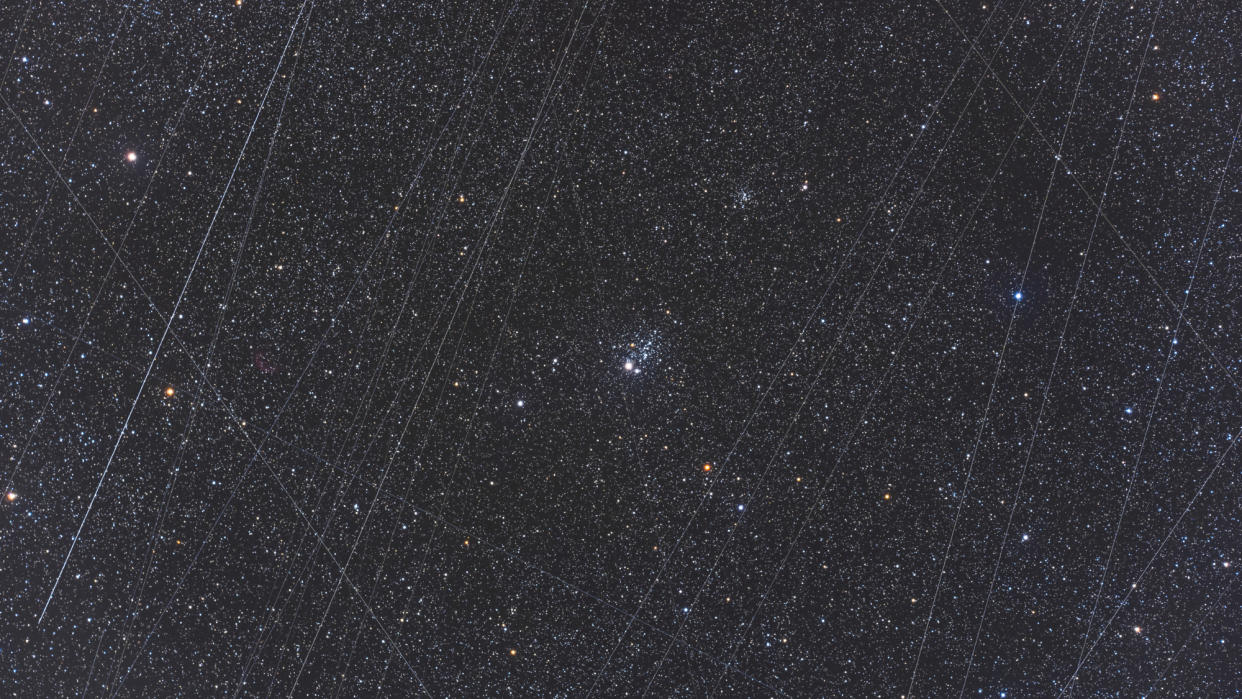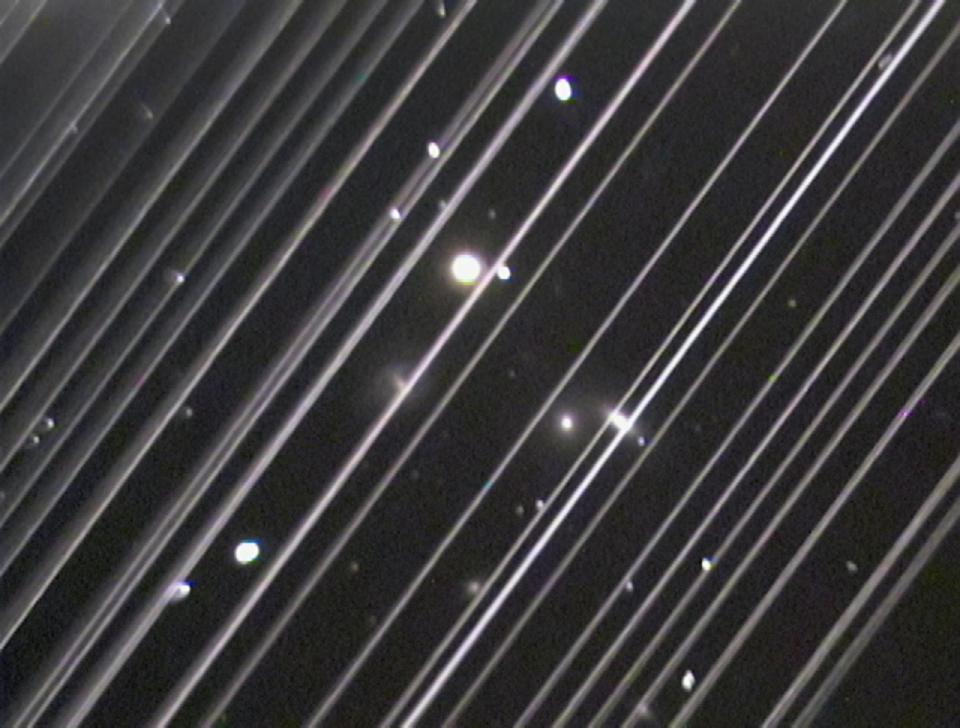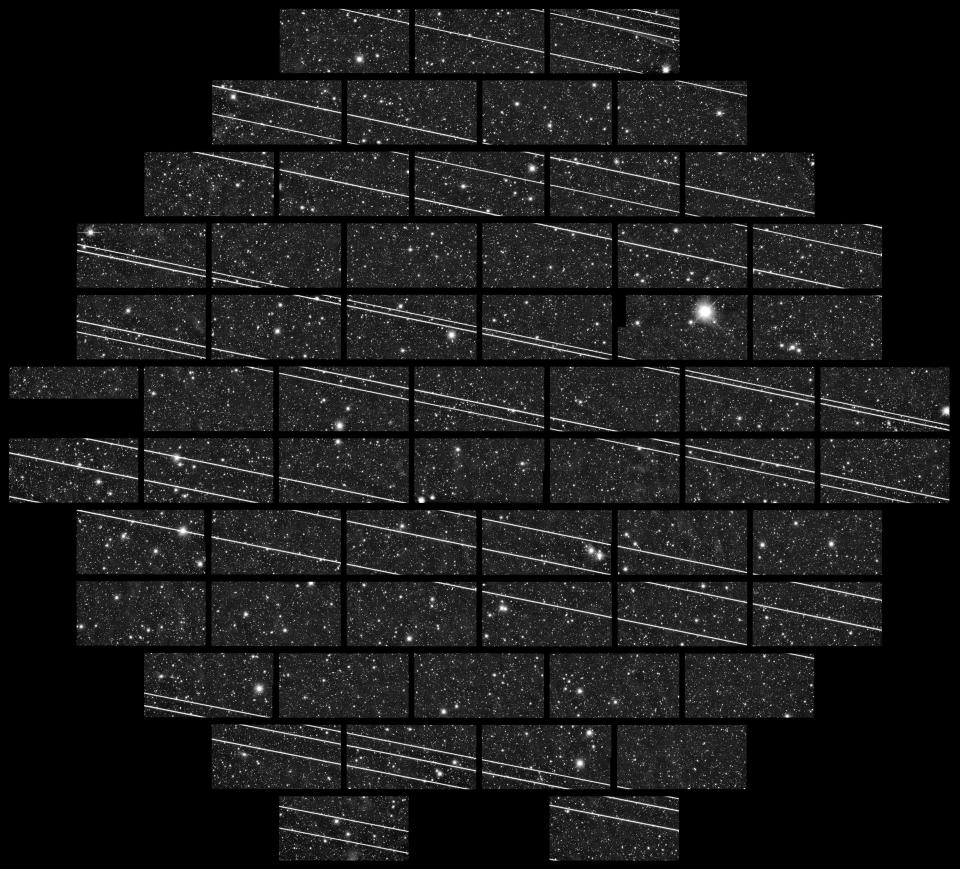Blinded by the light: How bad are satellite megaconstellations for astronomy?

Over the past few years, our planet has become increasingly encircled by Starlink, OneWeb and other "megaconstellation" satellites.
Yes, the emergence of those megaconstellations offers great benefits for humanity. But in a wait-a-minute pause, there are also substantial costs, including a growing imposition on astronomy. That's the view of David Koplow, the Scott K. Ginsburg Professor of Law at Georgetown University Law Center in Washington, D.C.
"We are just beginning to appreciate how bad the disruption can be for land-based and space-based telescopes, and as more and more satellite overflights occur, the problems will only intensify," Koplow told Inside Outer Space.
Related: Astronomers urged to fight 'tooth and nail' to protect dark skies
Legal rights
Koplow's concerns have been voiced in several scholarly works, the titles of which underscore his qualms, such as: "Large Constellations of Small Satellites: The Good, the Bad, the Ugly and the Illegal," as well as "Blinded by the Light: Resolving the Conflict Between Satellite Megaconstellations and Astronomy."
"The world has mostly been assuming that the relevant international law basically allows the satellite companies to do whatever they want in space, while forcing the observatories to adapt as well as they can," Koplow said.
But in reality, the legal regime is not so one-sided, according to Koplow: "Astronomers also have legal rights to free use of space, and they need not stand by idly while their profession is damaged."

'Hair on fire' emergency?
Koplow pointed out that, in 2019, the world of optical and radio astronomy changed abruptly and massively when the first big batch of SpaceX's Starlink satellites launched to low Earth orbit.
"Jolted by the sudden brightness of those spacecraft, and alarmed by the prospect of their legions of successors, observatories scrambled to respond," Koplow observed.
They did so by studying and documenting the true dimensions of the problem, beginning to invent or conceptualize mitigation measures, and entering into discussions with SpaceX and other companies.
"Some astronomers see this as a true 'hair on fire' emergency, heralding irretrievable losses to space science; others present a more sanguine face, depicting this as yet another challenge to be surmounted in surveying a decreasingly pristine sky," Koplow remarked.
Related: Starlink satellites: Facts, tracking and impact on astronomy

Incipient clash
That said, the astronomical community has related that the time and the financial costs of conducting effective astronomy will rise considerably, Koplow said, "and that some important data will simply be irretrievable, with concomitant losses for science and the future exploration and use of space."
In his "Blinded by the Light" treatise, which you can find here, Koplow described the incipient clash between satellite megaconstellations and astronomy, assessed the relevant international and domestic legal authorities, and proposed compromise solutions to mitigate the damage.
"Overall, the thesis is that a better balance must be struck between these competing types of space activities," Koplow added, "without ceding to either a comprehensive right to proceed in disregard of the key functions of the other."
RELATED STORIES:
— Hubble Space Telescope images increasingly affected by Starlink satellite streaks
— Satellite megaconstellations are threatening astronomy. What can be done?
— Megaconstellations could destroy astronomy, and there's no easy fix
Voluntary measures
Koplow acknowledged that some satellite companies have voluntarily invested considerable corporate talent and money in efforts to reduce their interference with astronomy.
"But these voluntary measures are not adequate to solve the problem, they are not durable and reliable, and they have not been adopted by all the companies," Koplow said.
"A stronger response is necessary," he concluded.

